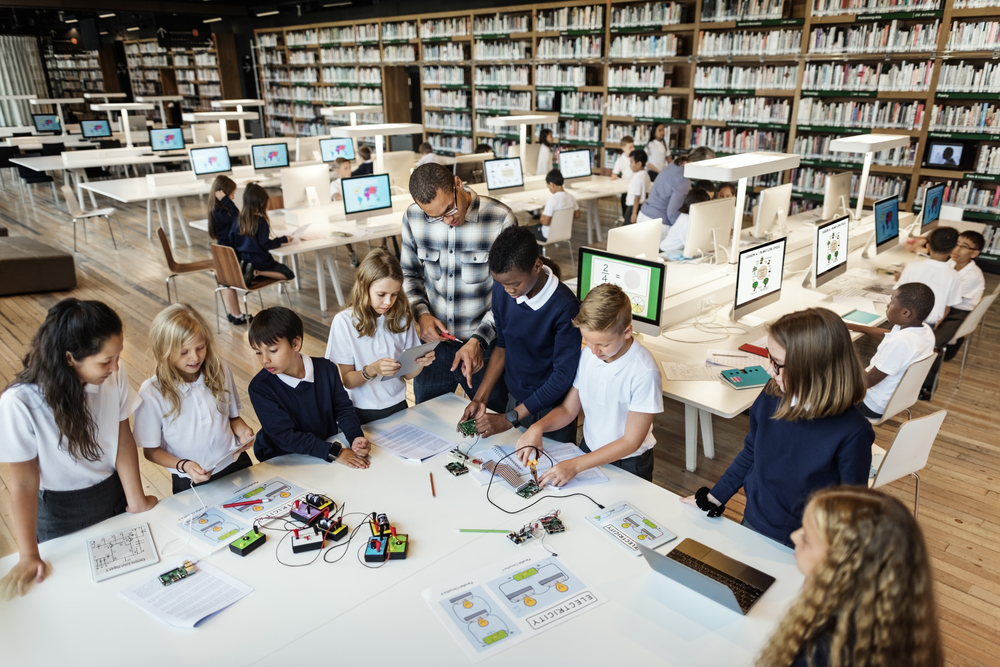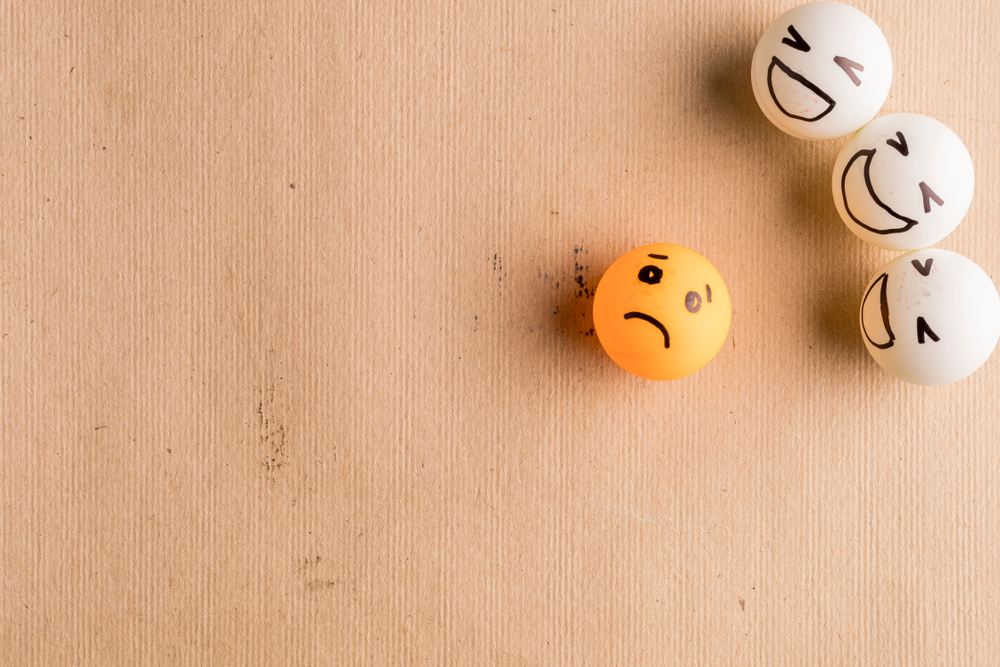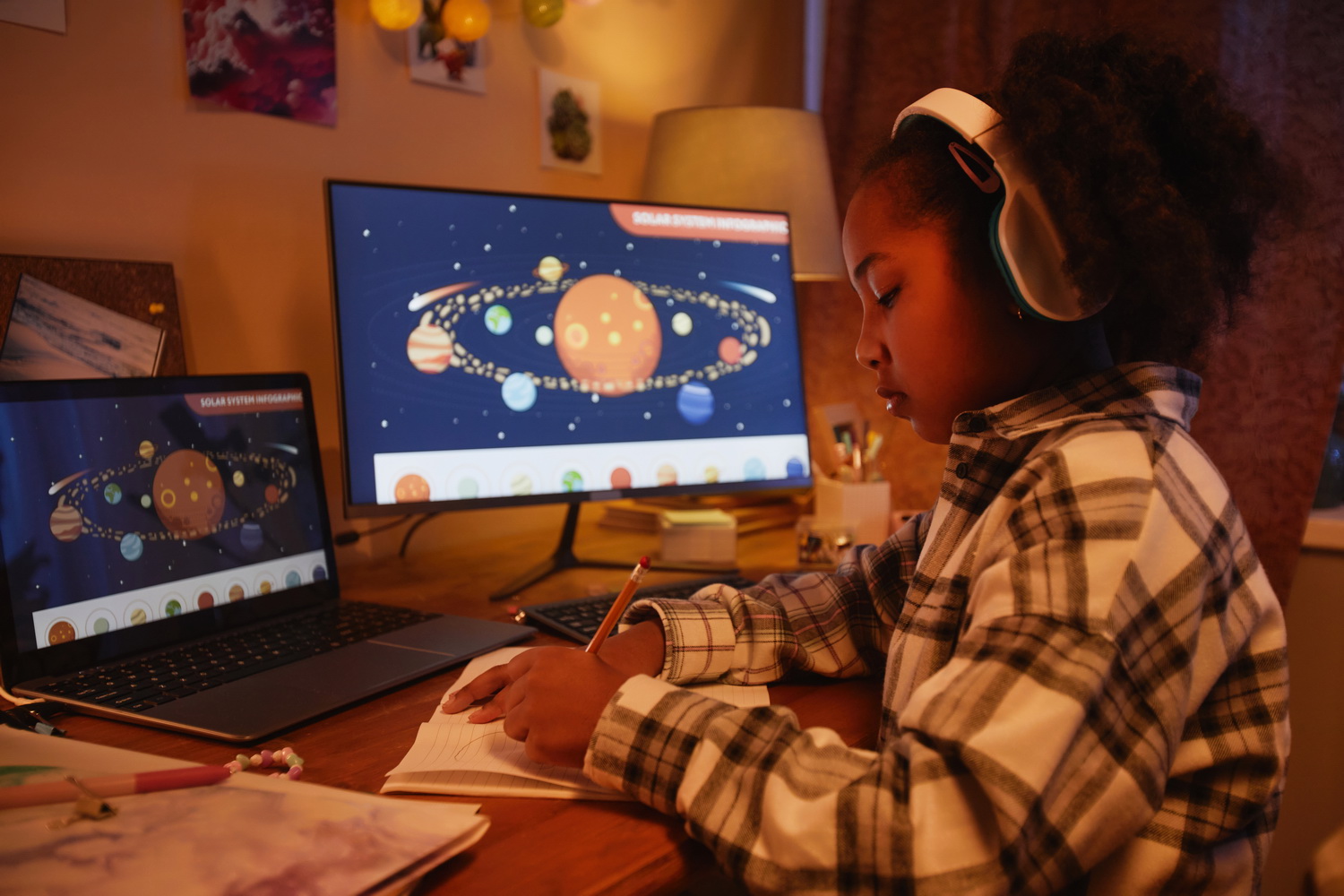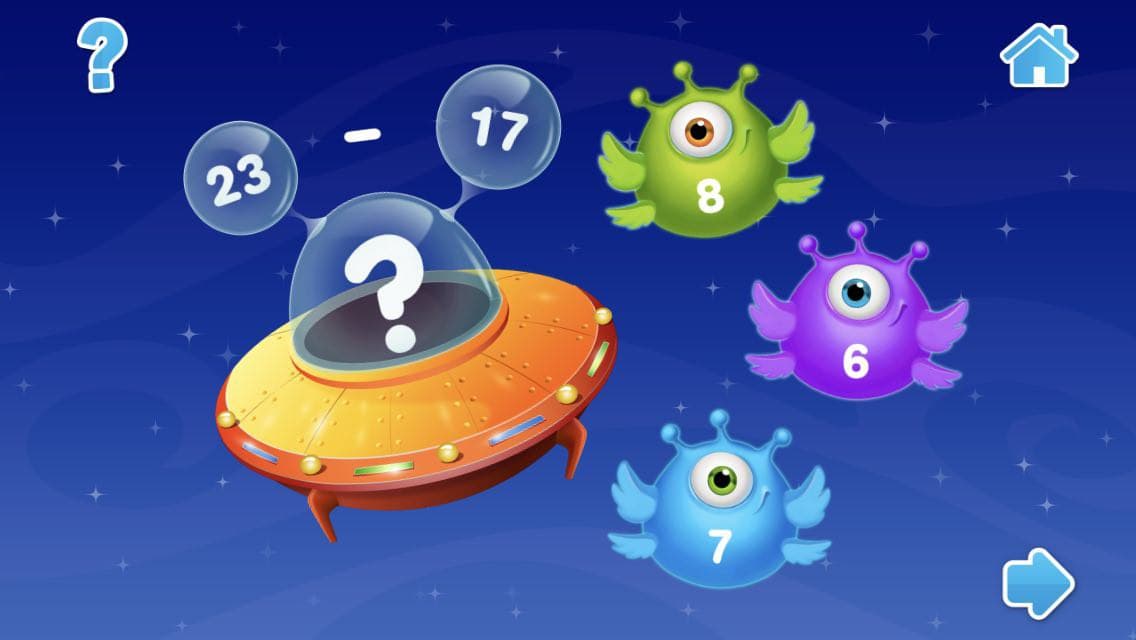5 Offbeat Physical Science Experiments for Beginners
Nov. 13, 2018
When it comes to easy science experiments your little learner will enjoy, most of us don’t immediately think of physics. After all, most of us remember struggling through physics class in high school, and as a society, we tend to label the subject as a tough one.
When we take a step back and simplify the basic principles of physics, even preschoolers can get in on the fun and learn about the laws that govern the physical world around us. Not only do kids have a ton of fun learning through STEM-based activities, they will build knowledge and a solid foundation for future scientific learning, having already mastered the basics.
If your child is just starting out learning physical science, look no further! We’ll explore at least 5 simple physics activities you and your child will love!
Ready, Set, Race!
This cool science experiment lets kids observe momentum and velocity while examining why some objects move faster than others. Kids will roll balls across a track, to observe which move farther and faster on their own. Then, ramp up the challenge by adding different types of forces, and allowing your child to watch as different forces move the objects faster and farther than others!
What You’ll Need:
- Several balls or marbles of varying sizes
- Kitchen scale
- Train tracks, car tracks, or make your own using rectangular wooden blocks or Lego Duplo bricks
- Tape measure
- Spray bottle (optional)
- Hair dryer (optional)
What to Do:
1. First, using the kitchen scale, measure each ball or marble you and your child will be using for the experiment. Write down each ball’s mass for future reference. While weighing, talk to your child about which balls are bigger and/or heavier, and ask your child if he or she has any predictions to make about which balls will move the fastest or farthest.
2. Line up the train or car tracks in a long row, with the incline closest to your child.
3. Help your child roll the balls or marbles down the track and observe which balls moved the fastest and farthest. Use the measuring tape to measure how far each ball travelled down the track, and discuss how the mass of the balls effected each.
4. After testing each ball or marble, repeat the process, but this time instead of rolling the balls down the track, select the lightest ball, and use some other force to propel the ball down the track. First, instruct your child to attempt to blow the ball so that it moves down the track. Next, try it again using a spray bottle filled with water. Finally, attempt it again using a hair dryer. Which force moved the ball the fastest and the farthest?
5. After the experiments are conducted, write down or talk your child through his or her observations and results.
Build a Wind Car
This fun-filled science experiment for kids will challenge your child’s engineering ability before observing how wind can be used to propel a vehicle!
What You’ll Need:
- 1- 5 “x 7 “ foam board sheet
- Stickers (optional)
- 2 large straws
- 2 long cake pop or kabob skewer sticks
- 4 wooden craft wheels
- Play dough
- Tape
- 1 large craft stick
- 1- 5”x5” card stock square
- Hair dryer
- Box fan
What to Do:
1. First, help your child construct the wind car before the experiment can begin! The foam board will become the body of the car. Encourage your child to personalize and decorate it with stickers!
2. Next, using the tape, attach the straws to either end of the foam sheet. Then, slide in the kabob skewers or cake pop sticks.
3. Attach the wheels to the ends of the sticks and take use play dough to cap off the ends of the sticks to ensure the wheels don’t fall off.
4. Slit a small hole in the middle of the foam board, and stick in the craft stick, and tape to secure, if necessary. Finally, tape the cardstock to the craft stick, creating a paper sail.
5. Now, it’s time to experiment! Attempt to use wind to propel the wind car. Start out by challenging your child to blow the car along the floor. Next, use a box fan and try out the different speeds to see how fast and far the wind blows the car. Finally, use a hair dryer to propel the car. Which blew the car the fastest and farthest?
Feel free to build another car, and have a blast racing your cars around the house! To take this experiment even further, try racing your wind cars on different types of flooring from tile, to hard wood, to carpet, to see how the car responds to each!
The Penny Tower Experiment
According to Sir Isaac Newton’s first law of motion, an object in motion (or at rest) will stay in motion (or at rest). Your child will test this law by quickly removing an object at rest to see how others react This quick and simple science experiment, perfect for elementary students, will allow children to learn about friction and inertia.

What You’ll Need:
- A bunch of pennies
- A dinner knife
What to Do:
1. Help your child construct a tower using the pennies. Stack enough pennies to make the tower sturdy, but not too high that the tower is leaning or ready to fall over.
2. In one quick motion, swipe the bottom penny cleanly away from the rest of the tower.
3. See how many pennies your child can swipe before the tower topples over!
How Does it Work?
The above experiment is simple enough, but applies Newton’s first law of motion. Because the coin tower is stacked, the coins are at rest, and will remain at rest until an outside force changes its status. By swiping out the bottom penny, the force should topple over the stack, but friction, or the lack thereof, also comes into play.
Because there is only friction between the bottom penny and the coin directly on top of it, the rest of the stack remains unaffected. This causes the entire stack to drop down, nearly perfectly to the floor. However, as the stack gets shorter and shorter, eventually the friction from the bottom penny will disrupt the short stack’s ability to remain intact, causing it to topple.
Push and Pull Across the Floor
This exciting experiment is perfect for curious preschoolers just learning about the forces of push and pull, as well as friction!
What You’ll Need:
- A shallow rectangular laundry basket with handles
- Toys or objects to fill the laundry basket
- Rope or thick twine
- Various types of flooring, like carpet, hardwood, tile, etc.
- Stopwatch or timer
What to Do:
1. Using the twine or rope, make a long rope and thread it through the holes in the laundry basket and make a knot.
2. Fill the laundry basket with toys or other objects to give it a little weight.
3. To get started with the experiment, choose a location in your home to start, and designate the space allowed to pull and push the basket. Be sure to set a starting location and a finish line!
4. Challenge your child to first push the basket to the finish line, in the fastest amount of time possible. Once your child begins, time your child and write down the time after finishing.
5. Next, instruct your child to try it again, but instead using the rope to pull the basket. Again, time your child and record the time it took to pull it across the floor.
6. Compare the two times. Was it easier to push or pull the basket?
7. Continue your experiment by adding more objects to the basket, or taking them away. Move to other locations of the house to try it out on different types of flooring. How does carpet compare to hardwood or tile? Why might it be harder to move the basket over the carpet than the other types of flooring? Help your child record his or her observations and discuss the results.
The Great Egg Experiment!
When it comes to simple physics activities, it doesn’t get much easier than this awesomely fun experiment! Get ready to sacrifice a few eggs all in the name of science. Your child will drop eggs and discover how an inclined plane can help the eggs move slower and crack less. Since the eggs are hardboiled, feel free to peel and enjoy after the experiment is finished!

What You’ll Need:
- 3 or 4 hardboiled eggs
- A long, straight, rectangular board; this can be a portable ironing board, or even a long, sturdy piece of cardboard
What to Do:
1. To start, take one of the hardboiled eggs, and allow your child to drop it on the floor without the use of an inclined plane. Not only will this be fun, but it’ll make the eggshell crack badly!
2. Next, help your child set up an inclined plane. This can near the bottom of a staircase, so that the egg lands on the floor. Holding the plane, help your child roll the egg down the board. After it lands, examine the egg shell and compare it to the egg your child dropped on the floor in the beginning of the experiment. Your child will notice that the egg is still cracked, but not as badly as the first egg.
3. Continue to experiment! Make the inclined plane less steep and notice how the egg barely cracks when it lands on the floor, or make it more steep to show the opposite! Discuss how force varies because of the incline
Without a doubt, physics is a subject accessible to the littlest of learners! Beginning with the simple, fun physics experiments above, your child can explore the physical world, learning the laws of motion, forces, and much more! Continue your child’s learning and supplement the above activities using essential resources like science experiment videos, all available from Kids Academy!










